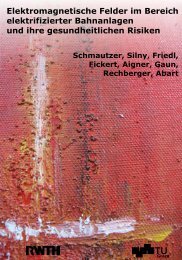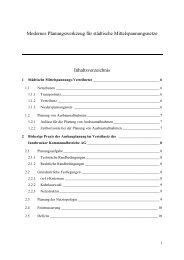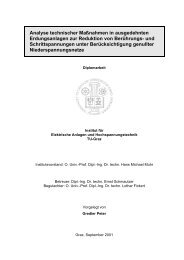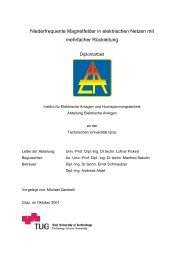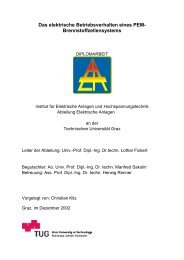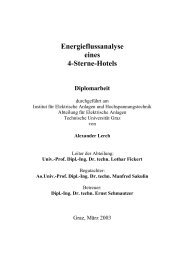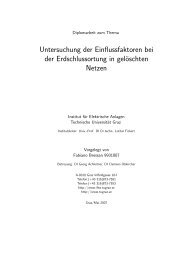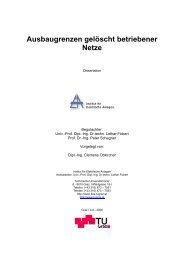Development of a wavelet-based algorithm to detect and determine ...
Development of a wavelet-based algorithm to detect and determine ...
Development of a wavelet-based algorithm to detect and determine ...
Create successful ePaper yourself
Turn your PDF publications into a flip-book with our unique Google optimized e-Paper software.
6.1. INTRODUCTION 34<br />
analysis theory <strong>and</strong> developed the fast <strong>algorithm</strong>s <strong>of</strong> the <strong>wavelet</strong> transform [7]. Since<br />
then, the <strong>wavelet</strong> transform has been spreading in different scientific areas because <strong>of</strong><br />
its perfection in theory <strong>and</strong> suitability for a wide range <strong>of</strong> applications specially for<br />
processing transient signals.<br />
As a transient signal, its amplitude, frequency or both do not stay constant when time<br />
changes. Up <strong>to</strong> now, the Fourier transform <strong>based</strong> methods are generally employed<br />
for the processing <strong>of</strong> power transients, despite that the Fourier transform is only suit-<br />
able for periodical signals. This is why there are still many unsatisfac<strong>to</strong>ry results <strong>and</strong><br />
nonunified definitions concerning the Fourier transform applications in power sys-<br />
tems, although great deal <strong>of</strong> concerning work has been done. There is always the<br />
requirement for a more suitable method <strong>to</strong> process power transients.<br />
With the development <strong>of</strong> the <strong>wavelet</strong> transform, it is naturally <strong>to</strong> explore <strong>and</strong> see how<br />
this promising approach works in power systems. Since 1994, the <strong>wavelet</strong> transform<br />
has been introduced in<strong>to</strong> power systems <strong>and</strong> applied for the analysis <strong>and</strong> the classifica-<br />
tion <strong>of</strong> power quality events [9], protections, data compression, cable partial discharge<br />
measurement <strong>and</strong> so on. There is a sharp increasing tendency in the presentation about<br />
the <strong>wavelet</strong> transform applications in power systems. The <strong>wavelet</strong> transform is becom-<br />
ing a well-known method <strong>and</strong> is drawing more attention <strong>of</strong> electrical engineers.<br />
Through the published papers, it is known that the <strong>wavelet</strong> transform is suitable for the<br />
analysis <strong>of</strong> power transients <strong>and</strong> has a big potential area in power system applications.<br />
However, it is noticed that the <strong>wavelet</strong> transform applications in power systems are<br />
still quite rough <strong>and</strong> limited:<br />
• They are mainly on the introduction <strong>of</strong> the basic conceptions <strong>and</strong> theory <strong>of</strong> the<br />
<strong>wavelet</strong> transform but lack <strong>of</strong> detail explanations <strong>and</strong> practical application re-<br />
sults.<br />
• They are mainly with qualitative analysis but short <strong>of</strong> rationing criteria <strong>and</strong> suf-<br />
ficient verifications.<br />
• They are mainly on the application <strong>of</strong> basic <strong>wavelet</strong> <strong>algorithm</strong> but hardly on the<br />
deep or extension theories such as <strong>wavelet</strong> singularity theory <strong>and</strong> improved al-



